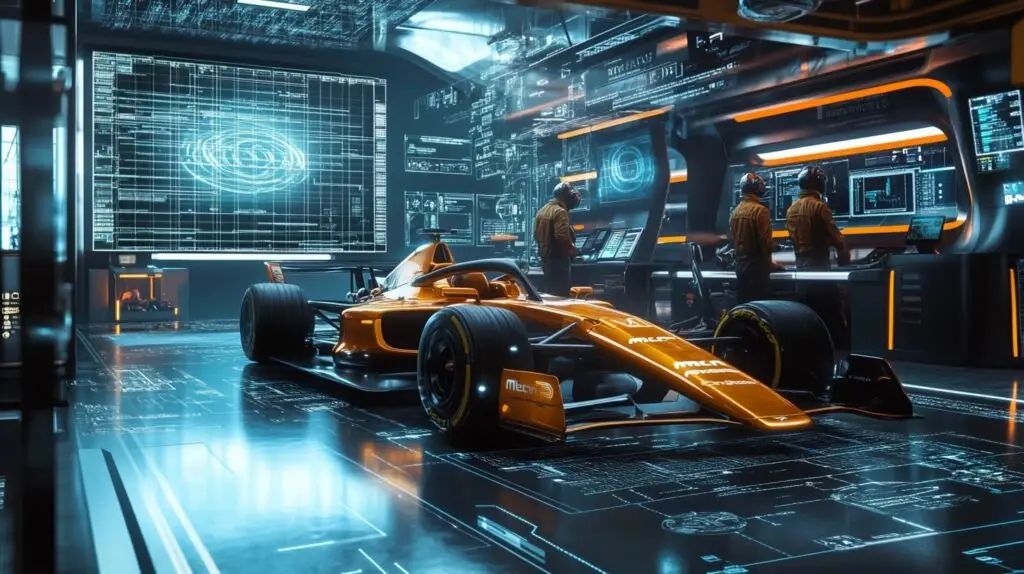From Pit Lane to the Boardroom
In motorsports, the role of leadership has changed dramatically over the decades. Once, leading a racing team primarily involved managing drivers and mechanics in the pit lane. Today, leadership in motorsports extends far beyond the track, encompassing complex business operations, technological innovation, and global brand strategy. The evolution of these leadership roles—from drivers calling the shots to strategic partnerships influencing the future of the sport—offers a fascinating look at how leaders in any high-pressure environment can adapt, grow, and leave a lasting legacy.
Early Days of Leadership: The Driver as Leader
In the early days of racing, drivers often took on multiple roles, acting as both the on-track talent and the tactical mind behind the team. They were responsible for car setup, making strategic decisions during races, and often even financing their own efforts. In this era, leadership in motorsports was hands-on and personal, with drivers taking an active role in everything from mechanical adjustments to team dynamics.
Notable figures such as Tazio Nuvolari and Juan Manuel Fangio, legends in the 1930s and 1950s respectively, set the tone for what it meant to lead on and off the track. Fangio, known for his calm demeanor and tactical skill, showcased how a driver could inspire his team while making decisions in real-time during races. Leadership, during this time, was characterized by adaptability, courage, and a deep understanding of one’s machine and team.
The Rise of the Crew Chief and Team Manager Roles
As motorsports became more professionalized, the responsibilities began to shift. By the 1960s and 70s, specialized roles such as crew chiefs and team managers emerged, with leaders focused on creating dedicated support systems for drivers. Crew chiefs became essential figures in the pit lane, responsible for coordinating with drivers, managing race strategies, and optimizing car performance based on driver feedback.
Ken Tyrrell, a prominent team manager, transformed Formula 1 racing by focusing on strategic decisions and forming a cohesive team structure. His commitment to supporting drivers like Jackie Stewart showed how the introduction of these new leadership roles could improve team performance. By the 1980s, the crew chief and team manager roles were fully established, marking a shift toward a more structured approach to leadership, with defined responsibilities aimed at maximizing every competitive edge.
From the Track to the Boardroom: The Modern Team Principal
Today, leadership in motorsports has expanded beyond the track, with team principals and executives overseeing entire organizations. Modern team leaders must balance business management, sponsor relations, and brand image with the traditional demands of racing. This is especially evident in Formula 1, where the team principal plays a crucial role not only in race strategy but also in managing complex operations and high-profile sponsorships.
Leaders like Toto Wolff of Mercedes and Christian Horner of Red Bull Racing are known not only for their on-track success but also for their business acumen. They handle multimillion-dollar budgets, foster relationships with global brands, and strategically build their teams’ legacies. Modern leadership in motorsports, therefore, involves a blend of tactical race decisions and long-term business strategy, a dual focus that has redefined what it means to lead a racing team.
Leadership Qualities That Have Stood the Test of Time
While the scope of leadership has evolved, certain core qualities remain constant:
- Resilience: Adaptability and the ability to withstand setbacks are as important today as they were in the early days of racing. Leaders who inspire confidence during challenging moments often make the biggest impact.
- Adaptability: Whether making quick adjustments on the track or responding to industry shifts, adaptability remains a critical skill in motorsports.
- Empathy and Unity: Building a collaborative team environment, much like Ken Tyrrell’s approach, is essential for maximizing performance.
- Vision: Modern leaders must not only think about the next race but also about the future of their team and the industry at large.
Case Study: Leadership Evolution in McLaren Racing
McLaren Racing’s journey from a Formula 1 team to a technology powerhouse illustrates how leadership can drive evolution within motorsports. Founded in 1963 by New Zealand driver Bruce McLaren, the team initially focused on F1, achieving remarkable success in the 1970s and 1980s. However, McLaren’s leadership recognized early on that they could expand beyond F1, creating McLaren Applied Technologies (now McLaren Applied) to leverage the team’s expertise across other racing series and industries.
Expansion into Diverse Racing Series
McLaren Applied has become a key supplier of technology in multiple motorsport disciplines, showcasing the leadership’s foresight in diversifying its portfolio:
- Formula E: McLaren Applied was chosen by the FIA to be the sole battery supplier for Formula E, starting from the 2018 season. This advancement allowed Gen2 Formula E cars to complete races without mid-race car changes, a groundbreaking achievement in electric racing technology.
- IndyCar Series: Since 2007, McLaren Applied has supplied Electronic Control Units (ECUs) to IndyCar, enhancing performance and data capabilities.
- NASCAR: When NASCAR transitioned to electronic fuel injection in 2012, McLaren Applied provided the TAG-400N ECU, a technology that has proven its reliability with over 4 million miles of flawless racing.
Technological Innovations and Leadership
McLaren Applied has led several innovations that underscore its leadership in the industry:
- ATLAS Data System: This advanced telemetry tool allows racing teams to analyze data in real time, giving them a competitive edge. The ATLAS GT version provides even greater insight for performance optimization.
- TAG GT Solutions: McLaren Applied’s Vehicle Control Unit (VCU-500) and other TAG GT solutions have been integrated into zero-emission prototypes like the H24EVO, demonstrating a commitment to sustainable technology.
Strategic Partnerships and Industry Influence
McLaren’s leadership has also forged strategic partnerships to strengthen its technological influence:
- TDK Collaboration: In October 2024, McLaren partnered with Japanese components manufacturer TDK to enhance electric vehicle technologies in Formula E. This partnership reflects McLaren’s forward-thinking approach to EV technology and innovation.
McLaren’s growth from an F1-focused team to a leader in motorsport technology illustrates how adaptive leadership can pave the way for success in new markets. By embracing innovation, expanding its reach, and forming strategic partnerships, McLaren has set a benchmark for how leadership can drive growth and maintain relevance in a constantly evolving industry.
The Future of Leadership in Motorsports
As motorsports embrace new technologies such as AI, data analytics, and electric vehicles, the role of leadership will continue to evolve. Future leaders in the industry may need to navigate ethical considerations around autonomous systems, environmental sustainability, and even greater levels of international collaboration. The ability to lead with a balance of competitive drive and social responsibility will be critical as the sport adapts to these changes.
Conclusion: Lessons from Motorsports Leadership
From drivers making calls in the early days to today’s global business leaders, the evolution of leadership in motorsports demonstrates the importance of adaptability, resilience, and vision. Leaders like those at McLaren exemplify how a commitment to innovation and strategic thinking can ensure long-term success. For those looking to lead in any high-stakes field, the world of motorsports offers enduring lessons on how to thrive in an environment that demands both precision and vision.
References
1.McLaren Applied – Formula E Battery Technology
“Formula E battery: Powering the future of electric racing.” McLaren Applied. Accessed November 2024.
https://mclarenapplied.com/solutions/formula-e-battery
2.McLaren Applied – IndyCar ECU
“McLaren Applied: Racing technology for IndyCar.” Wikipedia. Accessed November 2024.
https://en.wikipedia.org/wiki/McLaren_Applied
3.McLaren Applied – NASCAR Electronic Fuel Injection
“TAG-400N ECU for NASCAR.” McLaren Applied. Accessed November 2024.
https://www.mclarenapplied.com/news/mclaren-applied-nascar-competition-partner
4.ATLAS Data System
“ATLAS: Real-time data analysis for motorsports.” McLaren Applied. Accessed November 2024.
https://www.mclarenapplied.com/solutions/atlasgt
5.McLaren Applied – TAG GT Vehicle Control
“TAG GT solutions for high-performance and sustainable racing.” McLaren Applied. Accessed November 2024.
https://mclarenapplied.com/solutions/tag-gt
6.Collaboration with TDK
“Apple supplier TDK partners with McLaren Racing for EV push.” Reuters. October 2024.


